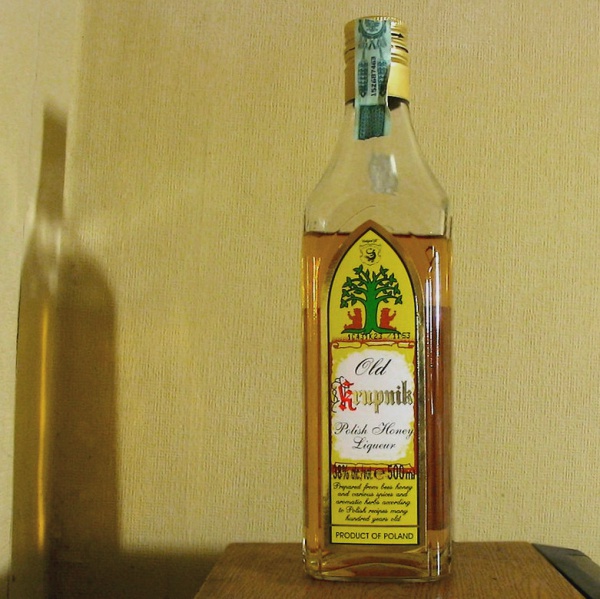Facts About Krupnik
Krupnik, also known as Krupnikas, is a delightful, sweet alcoholic drink similar to a liqueur. Made from grain spirit and honey, this traditional beverage is cherished in Poland, Belarus, and Lithuania. In Poland, it falls under the category of nalewka, a type of alcoholic drink.
You can find mass-produced Krupnik with an alcohol content of about 40-50%. However, more traditional versions are made using grain alcohol that boasts a potent 80-100%. Clover honey is the primary sweetener, and up to 50 different herbs can be added to create unique flavors. Each producer often has their special recipe, many of which have been passed down through generations.
Krupnik has its origins in what is now Belarus, when it was part of the Polish-Lithuanian Commonwealth. According to legend, the recipe was created by Benedictine monks at a monastery in Niaśviž, founded by Mikołaj Krzysztof "Sierotka" Radziwiłł. The drink has been known in Poland and Lithuania since at least the 16th century and was popular among the Commonwealth’s nobility. Interestingly, Polish soldiers even used it as a disinfectant during World War II.
The flavor of Krupnik can vary widely depending on the spices and herbs used. The type of honey and the ratios of seasoning play a significant role in the final taste. The process involves mixing, boiling, and straining the concoction before adding it to a vodka base. Krupnik can be enjoyed hot, at room temperature, or chilled. There’s also a special variety made by the Karaims, which uses more herbs and less honey.
"Krupnik" is also a brand name for a line of alcoholic beverages produced by the Belvédère company, including Krupnik, vodka, and other nalewki. In 2014, Krupnik vodka was ranked as the eighth most popular vodka brand in the world by sales volume.

 Russia
Russia